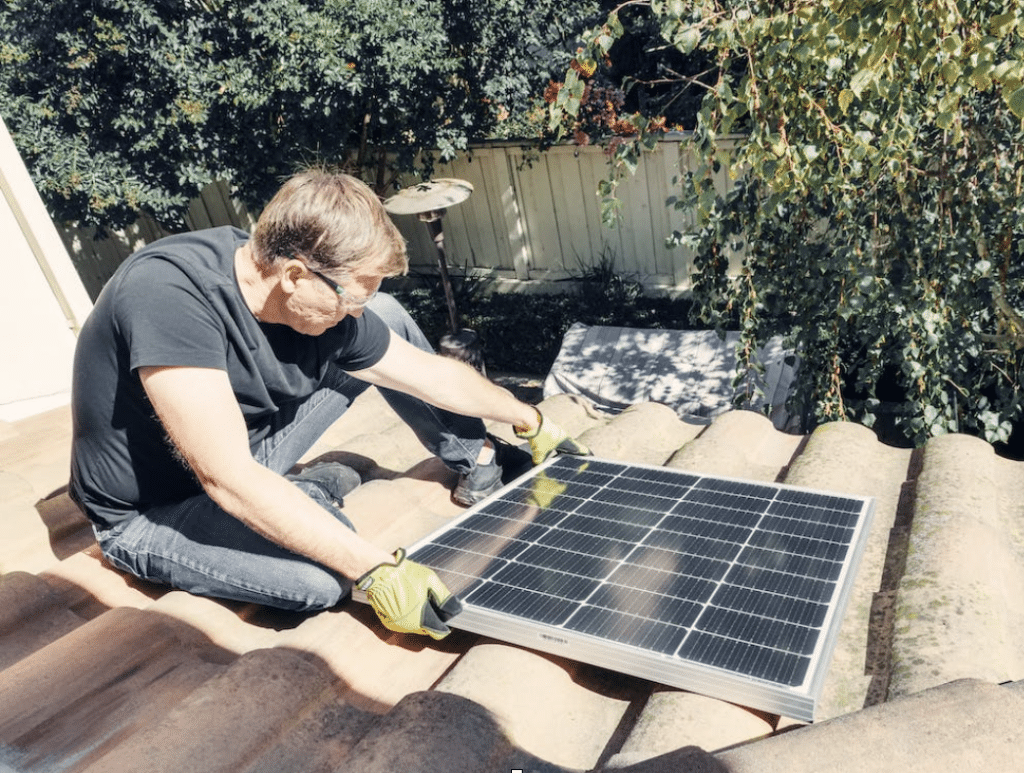Not an Environmental Endgame: One Builder’s Opinion About the Inflation Reduction Act’s Solar Provisions
Solar is just the start, according to one Dallas-area builder focusing on energy-efficient housing.
|
Did you know that there are several Ohio solar incentives, rebates, and programs expiring in 2023? Before you start worrying, you should know that there are unbelievable new incentives here now! Check out one of the most popular resources for learning about these programs in the link below.
Access Ohio Solar Programs |
President Biden’s Inflation Reduction Act lets eligible homeowners deduct up to 30% of their installation and operating costs from their annual taxes. The ultimate projected value of these savings and costs of other act provisions is $369B, which is the most significant net expenditure for environmental and climate concerns to date.
But it may not be enough.
|
Ohio mortgage programs may be able to save you hundreds every month. A new 2024 mortgage may be able to give relief to homeowners. Unfortunately, most Americans will not receive their mortgage benefits because they are not aware of some of these programs. You do not need to pay anything to check how much you could get.
Check Ohio Programs Here |
One Builder’s Perspective
Alan Hoffman builds energy-efficient housing in Texas. He pioneered a housing complex centered around environmental concerns, including car charging outlets, solar paneling, custom energy-efficient windows and doors, and specially insulated walls to prevent temperature leakage in or out of the home.
Rather than stop at solar, Hoffman thinks of the entire ecological ontology as a system rather than individual parts.
When asked about the solar provisions in the act, Hoffman said: “Solar panels are extremely important. If you think about the growth in this region, solar has delivered. If there were no solar we would all be suffering. It has been supportive of the grid and it makes the grid perform better. That’s why you’ll see Oncor giving rebates. Energy providers are not necessarily resistant to what green builders are doing because they’re viewing their companies as energy companies. As we come into more demand in the coming years we’re seeing more breakthrough technology. We’re seeing better batteries and a reduction in lithium. We don’t have an energy problem; we have a technology problem.”
A Pioneer in Green Construction
When Hoffman says solar is insufficient on its own, he speaks with authority.
He’s a Dallas environmental commission leader and at the forefront of the ecological building movement nationally, if not globally. He was the first builder to bring concrete forms, preferred for comprehensive insulation but costly, to Texas in 1995.
And he hasn’t slowed down since.
One of these new developments was featured in a parade of homes, and the entire structure is built with the environment in mind. It has thermal mass walls with functional breezeways and whitewashed cement that is aesthetic and insulating.
The pantry doubles as a storm room for Texan tornadoes, and the rooftops capture rainwater to recycle in the garden areas. And all of this doesn’t even account for the power generation the home sees from a robust solar infrastructure.
In fact, the home is so easy on the environment (and wallet) that the monthly power bill during the recent brutal 100-degree summer was less than $100.
When asked how he approaches projects, Hoffman said, “I build giant Yeti coolers disguised as homes. The lower BTU consumption you’re using, the less energy input you need. There’s less AC tonnage required. You’re looking at a lower amount of energy to drive that tonnage. We take the savings and buy better equipment. Where you save the money is at start-up. Every time the compressor kicks on, there’s less energy to get that thing spinning. You don’t necessarily need to run your AC at 100 percent capacity, but maybe 20 percent capacity.”
His homes meet the trifecta of third-party certification and are judged environmentally sustainable by the Department of Energy through its Net Zero Ready Program, the Energy Star Program, and the state-level Green Built Texas.
Money Matters
There is a tradeoff, however. While power bills average just $80 under the hottest conditions, his homes start at just below $1M in building costs. But Hoffman is confident increased interest and technological advances will drive down the price.
When asked about the industry’s future, Hoffman said, “You wouldn’t buy a Ferrari and put cheap tires on it. It’s always amused me and confused me that this is such a high-tech town. People want the latest and greatest in terms of technology, but we don’t incorporate that when it comes to homes. No one wants to change, whether it’s good or bad. By committing the resources to technology, we can drive the prices down.”
While we’re waiting for technology to catch up, homeowners can still enjoy the Inflation Reduction Act’s tax benefit for solar, while also taking advantage of new electric vehicle credits.
Conclusion
Hoffman thinks that environmental consideration in homebuilding is essential regardless of political perspectives, saying that “the climate is changing, period. We are on a rock spinning through space and rotating around the sun. Things are going to change. Are we contributing a huge amount of carbon to our atmosphere? Yes, every day. The planet is going to be fine. It’s going to go on with or without us. I’m tired of people saying science is BS. I’m not the guy who’s going to be at that rally.”
Agree or disagree, the savings associated with solar are substantial. The tax benefit is clear, but homeowners interested in solar can also rest assured that they’ll save with lower power bills in the long term.
For those inspired by Hoffman’s work who want to turn a solar installation into an entire home remodel, refinancing could provide the cash necessary to build the environmental paradise of your dreams.





